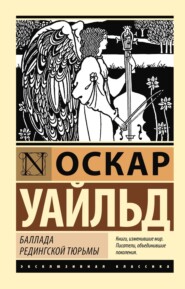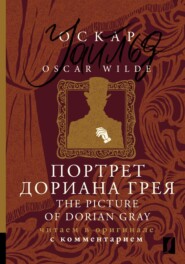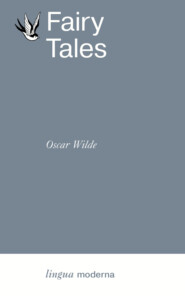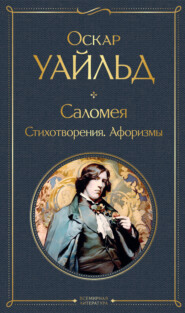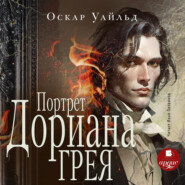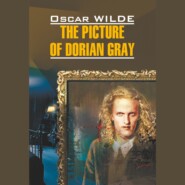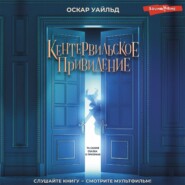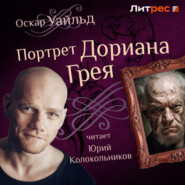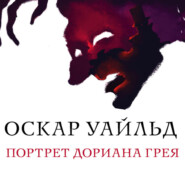По всем вопросам обращайтесь на: info@litportal.ru
(©) 2003-2024.
✖
Essays and Lectures
Настройки чтения
Размер шрифта
Высота строк
Поля
In the history of Roman thought we nowhere find any of those characteristics of the Greek Illumination which I have pointed out are the necessary concomitants of the rise of historical criticism. The conservative respect for tradition which made the Roman people delight in the ritual and formulas of law, and is as apparent in their politics as in their religion, was fatal to any rise of that spirit of revolt against authority the importance of which, as a factor in intellectual progress, we have already seen.
The whitened tables of the Pontifices preserved carefully the records of the eclipses and other atmospherical phenomena, and what we call the art of verifying dates was known to them at an early time; but there was no spontaneous rise of physical science to suggest by its analogies of law and order a new method of research, nor any natural springing up of the questioning spirit of philosophy with its unification of all phenomena and all knowledge. At the very time when the whole tide of Eastern superstition was sweeping into the heart of the Capital the Senate banished the Greek philosophers from Rome. And of the three systems which did at length take some root in the city, those of Zeno and Epicurus were used merely as the rule for the ordering of life, while the dogmatic scepticism of Carneades, by its very principles, annihilated the possibility of argument and encouraged a perfect indifference to research.
Nor were the Romans ever fortunate enough like the Greeks to have to face the incubus of any dogmatic system of legends and myths, the immoralities and absurdities of which might excite a revolutionary outbreak of sceptical criticism. For the Roman religion became as it were crystallised and isolated from progress at an early period of its evolution. Their gods remained mere abstractions of commonplace virtues or uninteresting personifications of the useful things of life. The old primitive creed was indeed always upheld as a state institution on account of the enormous facilities it offered for cheating in politics, but as a spiritual system of belief it was unanimously rejected at a very early period both by the common people and the educated classes, for the sensible reason that it was so extremely dull. The former took refuge in the mystic sensualities of the worship of Isis, the latter in the Stoical rules of life. The Romans classified their gods carefully in their order of precedence, analysed their genealogies in the laborious spirit of modern heraldry, fenced them round with a ritual as intricate as their law, but never quite cared enough about them to believe in them. So it was of no account with them when the philosophers announced that Minerva was merely memory. She had never been much else. Nor did they protest when Lucretius dared to say of Ceres and of Liber that they were only the corn of the field and the fruit of the vine. For they had never mourned for the daughter of Demeter in the asphodel meadows of Sicily, nor traversed the glades of Cithæron with fawn-skin and with spear.
This brief sketch of the condition of Roman thought will serve to prepare us for the almost total want of scientific historical criticism which we shall discern in their literature, and has, besides, afforded fresh corroboration of the conditions essential to the rise of this spirit, and of the modes of thought which it reflects and in which it is always to be found. Roman historical composition had its origin in the pontifical college of ecclesiastical lawyers, and preserved to its close the uncritical spirit which characterised its fountain-head. It possessed from the outset a most voluminous collection of the materials of history, which, however, produced merely antiquarians, not historians. It is so hard to use facts, so easy to accumulate them.
Wearied of the dull monotony of the pontifical annals, which dwelt on little else but the rise and fall in provisions and the eclipses of the sun, Cato wrote out a history with his own hand for the instruction of his child, to which he gave the name of Origines, and before his time some aristocratic families had written histories in Greek much in the same spirit in which the Germans of the eighteenth century used French as the literary language. But the first regular Roman historian is Sallust. Between the extravagant eulogies passed on this author by the French (such as De Closset), and Dr. Mommsen’s view of him as merely a political pamphleteer, it is perhaps difficult to reach the via media of unbiassed appreciation. He has, at any rate, the credit of being a purely rationalistic historian, perhaps the only one in Roman literature. Cicero had a good many qualifications for a scientific historian, and (as he usually did) thought very highly of his own powers. On passages of ancient legend, however, he is rather unsatisfactory, for while he is too sensible to believe them he is too patriotic to reject them. And this is really the attitude of Livy, who claims for early Roman legend a certain uncritical homage from the rest of the subject world. His view in his history is that it is not worth while to examine the truth of these stories.
In his hands the history of Rome unrolls before our eyes like some gorgeous tapestry, where victory succeeds victory, where triumph treads on the heels of triumph, and the line of heroes seems never to end. It is not till we pass behind the canvas and see the slight means by which the effect is produced that we apprehend the fact that like most picturesque writers Livy is an indifferent critic. As regards his attitude towards the credibility of early Roman history he is quite as conscious as we are of its mythical and unsound nature. He will not, for instance, decide whether the Horatii were Albans or Romans; who was the first dictator; how many tribunes there were, and the like. His method, as a rule, is merely to mention all the accounts and sometimes to decide in favour of the most probable, but usually not to decide at all. No canons of historical criticism will ever discover whether the Roman women interviewed the mother of Coriolanus of their own accord or at the suggestion of the senate; whether Remus was killed for jumping over his brother’s wall or because they quarrelled about birds; whether the ambassadors found Cincinnatus ploughing or only mending a hedge. Livy suspends his judgment over these important facts and history when questioned on their truth is dumb. If he does select between two historians he chooses the one who is nearer to the facts he describes. But he is no critic, only a conscientious writer. It is mere vain waste to dwell on his critical powers, for they do not exist.
In the case of Tacitus imagination has taken the place of history. The past lives again in his pages, but through no laborious criticism; rather through a dramatic and psychological faculty which he specially possessed.
In the philosophy of history he has no belief. He can never make up his mind what to believe as regards God’s government of the world. There is no method in him and none elsewhere in Roman literature.
Nations may not have missions but they certainly have functions. And the function of ancient Italy was not merely to give us what is statical in our institutions and rational in our law, but to blend into one elemental creed the spiritual aspirations of Aryan and of Semite. Italy was not a pioneer in intellectual progress, nor a motive power in the evolution of thought. The owl of the goddess of Wisdom traversed over the whole land and found nowhere a resting-place. The dove, which is the bird of Christ, flew straight to the city of Rome and the new reign began. It was the fashion of early Italian painters to represent in mediæval costume the soldiers who watched over the tomb of Christ, and this, which was the result of the frank anachronism of all true art, may serve to us as an allegory. For it was in vain that the Middle Ages strove to guard the buried spirit of progress. When the dawn of the Greek spirit arose, the sepulchre was empty, the grave-clothes laid aside. Humanity had risen from the dead.
The study of Greek, it has been well said, implies the birth of criticism, comparison and research. At the opening of that education of modern by ancient thought which we call the Renaissance, it was the words of Aristotle which sent Columbus sailing to the New World, while a fragment of Pythagorean astronomy set Copernicus thinking on that train of reasoning which has revolutionised the whole position of our planet in the universe. Then it was seen that the only meaning of progress is a return to Greek modes of thought. The monkish hymns which obscured the pages of Greek manuscripts were blotted out, the splendours of a new method were unfolded to the world, and out of the melancholy sea of mediævalism rose the free spirit of man in all that splendour of glad adolescence, when the bodily powers seem quickened by a new vitality, when the eye sees more clearly than its wont and the mind apprehends what was beforetime hidden from it. To herald the opening of the sixteenth century, from the little Venetian printing press came forth all the great authors of antiquity, each bearing on the title-page the words Ἅλδος ὁ Μανούτιος Ῥωμαῖος καὶ Φιλέλλην; words which may serve to remind us with what wondrous prescience Polybius saw the world’s fate when he foretold the material sovereignty of Roman institutions and exemplified in himself the intellectual empire of Greece.
The course of the study of the spirit of historical criticism has not been a profitless investigation into modes and forms of thought now antiquated and of no account. The only spirit which is entirely removed from us is the mediæval; the Greek spirit is essentially modern. The introduction of the comparative method of research which has forced history to disclose its secrets belongs in a measure to us. Ours, too, is a more scientific knowledge of philology and the method of survival. Nor did the ancients know anything of the doctrine of averages or of crucial instances, both of which methods have proved of such importance in modern criticism, the one adding a most important proof of the statical elements of history, and exemplifying the influences of all physical surroundings on the life of man; the other, as in the single instance of the Moulin Quignon skull, serving to create a whole new science of prehistoric archæology and to bring us back to a time when man was coeval with the stone age, the mammoth and the woolly rhinoceros. But, except these, we have added no new canon or method to the science of historical criticism. Across the drear waste of a thousand years the Greek and the modern spirit join hands.
In the torch race which the Greek boys ran from the Cerameician field of death to the home of the goddess of Wisdom, not merely he who first reached the goal but he also who first started with the torch aflame received a prize. In the Lampadephoria of civilisation and free thought let us not forget to render due meed of honour to those who first lit that sacred flame, the increasing splendour of which lights our footsteps to the far-off divine event of the attainment of perfect truth.
THE ENGLISH RENAISSANCE OF ART
‘The English Renaissance of Art’ was delivered as a lecture for the first time in the Chickering Hall, New York, on January 9, 1882. A portion of it was reported in the New York Tribune on the following day and in other American papers subsequently. Since then this portion has been reprinted, more or less accurately, from time to time, in unauthorised editions.
There are in existence no less than four copies of the lecture, the earliest of which is entirely in the author’s handwriting. The others are type-written and contain many corrections and additions made by the author in manuscript. These have all been collated and the text here given contains, as nearly as possible, the lecture in the original form as delivered by the author during his tour in the United States.
Among the many debts which we owe to the supreme æsthetic faculty of Goethe is that he was the first to teach us to define beauty in terms the most concrete possible, to realise it, I mean, always in its special manifestations. So, in the lecture which I have the honour to deliver before you, I will not try to give you any abstract definition of beauty – any such universal formula for it as was sought for by the philosophy of the eighteenth century – still less to communicate to you that which in its essence is incommunicable, the virtue by which a particular picture or poem affects us with a unique and special joy; but rather to point out to you the general ideas which characterise the great English Renaissance of Art in this century, to discover their source, as far as that is possible, and to estimate their future as far as that is possible.
I call it our English Renaissance because it is indeed a sort of new birth of the spirit of man, like the great Italian Renaissance of the fifteenth century, in its desire for a more gracious and comely way of life, its passion for physical beauty, its exclusive attention to form, its seeking for new subjects for poetry, new forms of art, new intellectual and imaginative enjoyments: and I call it our romantic movement because it is our most recent expression of beauty.
It has been described as a mere revival of Greek modes of thought, and again as a mere revival of mediæval feeling. Rather I would say that to these forms of the human spirit it has added whatever of artistic value the intricacy and complexity and experience of modern life can give: taking from the one its clearness of vision and its sustained calm, from the other its variety of expression and the mystery of its vision. For what, as Goethe said, is the study of the ancients but a return to the real world (for that is what they did); and what, said Mazzini, is mediævalism but individuality?
It is really from the union of Hellenism, in its breadth, its sanity of purpose, its calm possession of beauty, with the adventive, the intensified individualism, the passionate colour of the romantic spirit, that springs the art of the nineteenth century in England, as from the marriage of Faust and Helen of Troy sprang the beautiful boy Euphorion.
Such expressions as ‘classical’ and ‘romantic’ are, it is true, often apt to become the mere catchwords of schools. We must always remember that art has only one sentence to utter: there is for her only one high law, the law of form or harmony – yet between the classical and romantic spirit we may say that there lies this difference at least, that the one deals with the type and the other with the exception. In the work produced under the modern romantic spirit it is no longer the permanent, the essential truths of life that are treated of; it is the momentary situation of the one, the momentary aspect of the other that art seeks to render. In sculpture, which is the type of one spirit, the subject predominates over the situation; in painting, which is the type of the other, the situation predominates over the subject.
There are two spirits, then: the Hellenic spirit and the spirit of romance may be taken as forming the essential elements of our conscious intellectual tradition, of our permanent standard of taste. As regards their origin, in art as in politics there is but one origin for all revolutions, a desire on the part of man for a nobler form of life, for a freer method and opportunity of expression. Yet, I think that in estimating the sensuous and intellectual spirit which presides over our English Renaissance, any attempt to isolate it in any way from in the progress and movement and social life of the age that has produced it would be to rob it of its true vitality, possibly to mistake its true meaning. And in disengaging from the pursuits and passions of this crowded modern world those passions and pursuits which have to do with art and the love of art, we must take into account many great events of history which seem to be the most opposed to any such artistic feeling.
Alien then from any wild, political passion, or from the harsh voice of a rude people in revolt, as our English Renaissance must seem, in its passionate cult of pure beauty, its flawless devotion to form, its exclusive and sensitive nature, it is to the French Revolution that we must look for the most primary factor of its production, the first condition of its birth: that great Revolution of which we are all the children though the voices of some of us be often loud against it; that Revolution to which at a time when even such spirits as Coleridge and Wordsworth lost heart in England, noble messages of love blown across seas came from your young Republic.
It is true that our modern sense of the continuity of history has shown us that neither in politics nor in nature are there revolutions ever but evolutions only, and that the prelude to that wild storm which swept over France in 1789 and made every king in Europe tremble for his throne, was first sounded in literature years before the Bastille fell and the Palace was taken. The way for those red scenes by Seine and Loire was paved by that critical spirit of Germany and England which accustomed men to bring all things to the test of reason or utility or both, while the discontent of the people in the streets of Paris was the echo that followed the life of Emile and of Werther. For Rousseau, by silent lake and mountain, had called humanity back to the golden age that still lies before us and preached a return to nature, in passionate eloquence whose music still lingers about our keen northern air. And Goethe and Scott had brought romance back again from the prison she had lain in for so many centuries – and what is romance but humanity?
Yet in the womb of the Revolution itself, and in the storm and terror of that wild time, tendencies were hidden away that the artistic Renaissance bent to her own service when the time came – a scientific tendency first, which has borne in our own day a brood of somewhat noisy Titans, yet in the sphere of poetry has not been unproductive of good. I do not mean merely in its adding to enthusiasm that intellectual basis which in its strength, or that more obvious influence about which Wordsworth was thinking when he said very nobly that poetry was merely the impassioned expression in the face of science, and that when science would put on a form of flesh and blood the poet would lend his divine spirit to aid the transfiguration. Nor do I dwell much on the great cosmical emotion and deep pantheism of science to which Shelley has given its first and Swinburne its latest glory of song, but rather on its influence on the artistic spirit in preserving that close observation and the sense of limitation as well as of clearness of vision which are the characteristics of the real artist.
The great and golden rule of art as well as of life, wrote William Blake, is that the more distinct, sharp and defined the boundary line, the more perfect is the work of art; and the less keen and sharp the greater is the evidence of weak imitation, plagiarism and bungling. ‘Great inventors in all ages knew this – Michael Angelo and Albert Durer are known by this and by this alone’; and another time he wrote, with all the simple directness of nineteenth-century prose, ‘to generalise is to be an idiot.’
And this love of definite conception, this clearness of vision, this artistic sense of limit, is the characteristic of all great work and poetry; of the vision of Homer as of the vision of Dante, of Keats and William Morris as of Chaucer and Theocritus. It lies at the base of all noble, realistic and romantic work as opposed to the colourless and empty abstractions of our own eighteenth-century poets and of the classical dramatists of France, or of the vague spiritualities of the German sentimental school: opposed, too, to that spirit of transcendentalism which also was root and flower itself of the great Revolution, underlying the impassioned contemplation of Wordsworth and giving wings and fire to the eagle-like flight of Shelley, and which in the sphere of philosophy, though displaced by the materialism and positiveness of our day, bequeathed two great schools of thought, the school of Newman to Oxford, the school of Emerson to America. Yet is this spirit of transcendentalism alien to the spirit of art. For the artist can accept no sphere of life in exchange for life itself. For him there is no escape from the bondage of the earth: there is not even the desire of escape.
He is indeed the only true realist: symbolism, which is the essence of the transcendental spirit, is alien to him. The metaphysical mind of Asia will create for itself the monstrous, many-breasted idol of Ephesus, but to the Greek, pure artist, that work is most instinct with spiritual life which conforms most clearly to the perfect facts of physical life.
‘The storm of revolution,’ as Andre Chenier said, ‘blows out the torch of poetry.’ It is not for some little time that the real influence of such a wild cataclysm of things is felt: at first the desire for equality seems to have produced personalities of more giant and Titan stature than the world had ever known before. Men heard the lyre of Byron and the legions of Napoleon; it was a period of measureless passions and of measureless despair; ambition, discontent, were the chords of life and art; the age was an age of revolt: a phase through which the human spirit must pass, but one in which it cannot rest. For the aim of culture is not rebellion but peace, the valley perilous where ignorant armies clash by night being no dwelling-place meet for her to whom the gods have assigned the fresh uplands and sunny heights and clear, untroubled air.
And soon that desire for perfection, which lay at the base of the Revolution, found in a young English poet its most complete and flawless realisation.
Phidias and the achievements of Greek art are foreshadowed in Homer: Dante prefigures for us the passion and colour and intensity of Italian painting: the modern love of landscape dates from Rousseau, and it is in Keats that one discerns the beginning of the artistic renaissance of England.
Byron was a rebel and Shelley a dreamer; but in the calmness and clearness of his vision, his perfect self-control, his unerring sense of beauty and his recognition of a separate realm for the imagination, Keats was the pure and serene artist, the forerunner of the pre-Raphaelite school, and so of the great romantic movement of which I am to speak.
Blake had indeed, before him, claimed for art a lofty, spiritual mission, and had striven to raise design to the ideal level of poetry and music, but the remoteness of his vision both in painting and poetry and the incompleteness of his technical powers had been adverse to any real influence. It is in Keats that the artistic spirit of this century first found its absolute incarnation.
And these pre-Raphaelites, what were they? If you ask nine-tenths of the British public what is the meaning of the word æsthetics, they will tell you it is the French for affectation or the German for a dado; and if you inquire about the pre-Raphaelites you will hear something about an eccentric lot of young men to whom a sort of divine crookedness and holy awkwardness in drawing were the chief objects of art. To know nothing about their great men is one of the necessary elements of English education.
As regards the pre-Raphaelites the story is simple enough. In the year 1847 a number of young men in London, poets and painters, passionate admirers of Keats all of them, formed the habit of meeting together for discussions on art, the result of such discussions being that the English Philistine public was roused suddenly from its ordinary apathy by hearing that there was in its midst a body of young men who had determined to revolutionise English painting and poetry. They called themselves the pre-Raphaelite Brotherhood.
In England, then as now, it was enough for a man to try and produce any serious beautiful work to lose all his rights as a citizen; and besides this, the pre-Raphaelite Brotherhood – among whom the names of Dante Rossetti, Holman Hunt and Millais will be familiar to you – had on their side three things that the English public never forgives: youth, power and enthusiasm.
Satire, always as sterile as it in shameful and as impotent as it is insolent, paid them that usual homage which mediocrity pays to genius – doing, here as always, infinite harm to the public, blinding them to what is beautiful, teaching them that irreverence which is the source of all vileness and narrowness of life, but harming the artist not at all, rather confirming him in the perfect rightness of his work and ambition. For to disagree with three-fourths of the British public on all points is one of the first elements of sanity, one of the deepest consolations in all moments of spiritual doubt.
As regards the ideas these young men brought to the regeneration of English art, we may see at the base of their artistic creations a desire for a deeper spiritual value to be given to art as well as a more decorative value.
Pre-Raphaelites they called themselves; not that they imitated the early Italian masters at all, but that in their work, as opposed to the facile abstractions of Raphael, they found a stronger realism of imagination, a more careful realism of technique, a vision at once more fervent and more vivid, an individuality more intimate and more intense.
For it is not enough that a work of art should conform to the æsthetic demands of its age: there must be also about it, if it is to affect us with any permanent delight, the impress of a distinct individuality, an individuality remote from that of ordinary men, and coming near to us only by virtue of a certain newness and wonder in the work, and through channels whose very strangeness makes us more ready to give them welcome.
La personnalité, said one of the greatest of modern French critics, voilà ce qui nous sauvera.
But above all things was it a return to Nature – that formula which seems to suit so many and such diverse movements: they would draw and paint nothing but what they saw, they would try and imagine things as they really happened. Later there came to the old house by Blackfriars Bridge, where this young brotherhood used to meet and work, two young men from Oxford, Edward Burne-Jones and William Morris – the latter substituting for the simpler realism of the early days a more exquisite spirit of choice, a more faultless devotion to beauty, a more intense seeking for perfection: a master of all exquisite design and of all spiritual vision. It is of the school of Florence rather than of that of Venice that he is kinsman, feeling that the close imitation of Nature is a disturbing element in imaginative art. The visible aspect of modern life disturbs him not; rather is it for him to render eternal all that is beautiful in Greek, Italian, and Celtic legend. To Morris we owe poetry whose perfect precision and clearness of word and vision has not been excelled in the literature of our country, and by the revival of the decorative arts he has given to our individualised romantic movement the social idea and the social factor also.
But the revolution accomplished by this clique of young men, with Ruskin’s faultless and fervent eloquence to help them, was not one of ideas merely but of execution, not one of conceptions but of creations.
For the great eras in the history of the development of all the arts have been eras not of increased feeling or enthusiasm in feeling for art, but of new technical improvements primarily and specially. The discovery of marble quarries in the purple ravines of Pentelicus and on the little low-lying hills of the island of Paros gave to the Greeks the opportunity for that intensified vitality of action, that more sensuous and simple humanism, to which the Egyptian sculptor working laboriously in the hard porphyry and rose-coloured granite of the desert could not attain. The splendour of the Venetian school began with the introduction of the new oil medium for painting. The progress in modern music has been due to the invention of new instruments entirely, and in no way to an increased consciousness on the part of the musician of any wider social aim. The critic may try and trace the deferred resolutions of Beethoven [22 - As an instance of the inaccuracy of published reports of this lecture, it may be mentioned that all unauthorised versions give this passage as The artist may trace the depressed revolution of Bunthorne simply to the lack of technical means!] to some sense of the incompleteness of the modern intellectual spirit, but the artist would have answered, as one of them did afterwards, ‘Let them pick out the fifths and leave us at peace.’
And so it is in poetry also: all this love of curious French metres like the Ballade, the Villanelle, the Rondel; all this increased value laid on elaborate alliterations, and on curious words and refrains, such as you will find in Dante Rossetti and Swinburne, is merely the attempt to perfect flute and viol and trumpet through which the spirit of the age and the lips of the poet may blow the music of their many messages.
And so it has been with this romantic movement of ours: it is a reaction against the empty conventional workmanship, the lax execution of previous poetry and painting, showing itself in the work of such men as Rossetti and Burne-Jones by a far greater splendour of colour, a far more intricate wonder of design than English imaginative art has shown before. In Rossetti’s poetry and the poetry of Morris, Swinburne and Tennyson a perfect precision and choice of language, a style flawless and fearless, a seeking for all sweet and precious melodies and a sustaining consciousness of the musical value of each word are opposed to that value which is merely intellectual. In this respect they are one with the romantic movement of France of which not the least characteristic note was struck by Théophile Gautier’s advice to the young poet to read his dictionary every day, as being the only book worth a poet’s reading.
While, then, the material of workmanship is being thus elaborated and discovered to have in itself incommunicable and eternal qualities of its own, qualities entirely satisfying to the poetic sense and not needing for their æsthetic effect any lofty intellectual vision, any deep criticism of life or even any passionate human emotion at all, the spirit and the method of the poet’s working – what people call his inspiration – have not escaped the controlling influence of the artistic spirit. Not that the imagination has lost its wings, but we have accustomed ourselves to count their innumerable pulsations, to estimate their limitless strength, to govern their ungovernable freedom.
To the Greeks this problem of the conditions of poetic production, and the places occupied by either spontaneity or self-consciousness in any artistic work, had a peculiar fascination. We find it in the mysticism of Plato and in the rationalism of Aristotle. We find it later in the Italian Renaissance agitating the minds of such men as Leonardo da Vinci. Schiller tried to adjust the balance between form and feeling, and Goethe to estimate the position of self-consciousness in art. Wordsworth’s definition of poetry as ‘emotion remembered in tranquillity’ may be taken as an analysis of one of the stages through which all imaginative work has to pass; and in Keats’s longing to be ‘able to compose without this fever’ (I quote from one of his letters), his desire to substitute for poetic ardour ‘a more thoughtful and quiet power,’ we may discern the most important moment in the evolution of that artistic life. The question made an early and strange appearance in your literature too; and I need not remind you how deeply the young poets of the French romantic movement were excited and stirred by Edgar Allan Poe’s analysis of the workings of his own imagination in the creating of that supreme imaginative work which we know by the name of The Raven.
In the last century, when the intellectual and didactic element had intruded to such an extent into the kingdom which belongs to poetry, it was against the claims of the understanding that an artist like Goethe had to protest. ‘The more incomprehensible to the understanding a poem is the better for it,’ he said once, asserting the complete supremacy of the imagination in poetry as of reason in prose. But in this century it is rather against the claims of the emotional faculties, the claims of mere sentiment and feeling, that the artist must react. The simple utterance of joy is not poetry any more than a mere personal cry of pain, and the real experiences of the artist are always those which do not find their direct expression but are gathered up and absorbed into some artistic form which seems, from such real experiences, to be the farthest removed and the most alien.
‘The heart contains passion but the imagination alone contains poetry,’ says Charles Baudelaire. This too was the lesson that Théophile Gautier, most subtle of all modern critics, most fascinating of all modern poets, was never tired of teaching – ‘Everybody is affected by a sunrise or a sunset.’ The absolute distinction of the artist is not his capacity to feel nature so much as his power of rendering it. The entire subordination of all intellectual and emotional faculties to the vital and informing poetic principle is the surest sign of the strength of our Renaissance.
We have seen the artistic spirit working, first in the delightful and technical sphere of language, the sphere of expression as opposed to subject, then controlling the imagination of the poet in dealing with his subject. And now I would point out to you its operation in the choice of subject. The recognition of a separate realm for the artist, a consciousness of the absolute difference between the world of art and the world of real fact, between classic grace and absolute reality, forms not merely the essential element of any æsthetic charm but is the characteristic of all great imaginative work and of all great eras of artistic creation – of the age of Phidias as of the age of Michael Angelo, of the age of Sophocles as of the age of Goethe.






